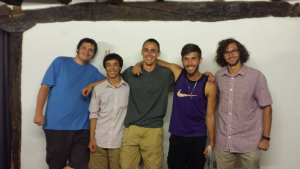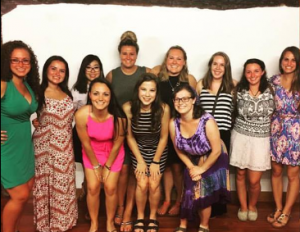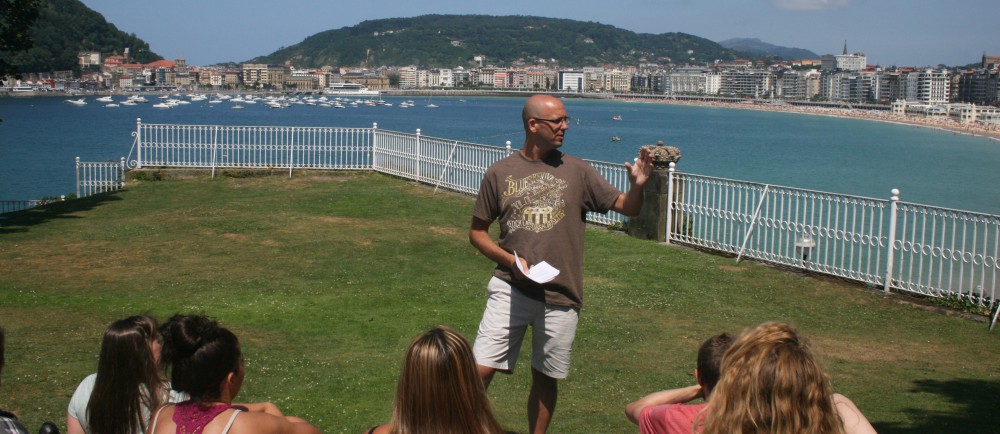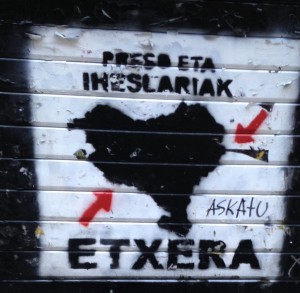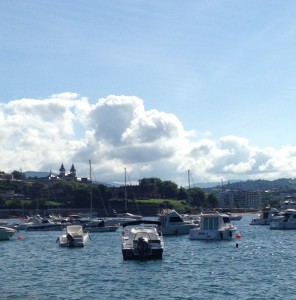During moments of nostalgia I’ve often encountered the truth of the expression “you don’t know what you have until you lose it”. While I’m sure I’ll look back on this trip with an immense feeling of nostalgia, there’s some other sensation I felt last night that I’d like to discuss. This previous evening during our final group excursion at the cider house, in the midst of a celebration, a rush of profound and conflicting emotions overcame me – a sort of present moment awareness, in which I felt the joy of realizing that I currently possessed something beautiful right in front of me, but also a sense of melancholy as I acknowledged that the beauty was fleeting and won’t last forever. As I reflect on our final gathering at the cider house last night I’ll do my best to expound on the sensations I felt, and how I feel it pertains to our abroad experience as a whole.
Yesterday my morning began like any other week day in San Sebastian. After a typical day of class, followed by lunch, workout, and power nap, I found myself boarding the bus in Plaza Gipuzkoa for our final class excursion to the cider house. It’s essentially a send off dinner where we receive a tour of the facility, and an unlimited fish, steak, and apple cider dinner. Although moderation was kept in mind, I had no problem indulging in the rich entrees the restaurant provided, and of course took advantage of the cider supply. While I expected to blissfully enjoy this celebration, the night took an unexpected twist for me after I had a brief moment of introspection. Towards the end of dinner as our waiters served dessert, I felt a sudden urge to just observe and reflect on the scenery around me – I glanced down the table and observed the seventeen faces of students and professors whom I’ve had the honor of sharing these past three weeks with. In spite of the long night of laughter, rich Basque plates, and barrels of cider, taking in the sight of this group of students suddenly struck me with a rush of uneasy sentiment, a heaviness in the chest, and yet also a profound joy upon observing their laughter and smiles. I’ve come to believe that what I witnessed and felt at that table serves as a symbol for the entire study abroad experience, and why one desires to travel in the first place. However, to better explain this I’d like to first make a brief digression into the present moment.
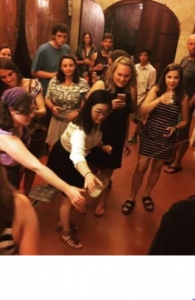
Thus far I’ve been writing this post on the 5th floor balcony of the Tabaclera building overlooking San Sebastian. To my right is the ominous Franco building that towers over the standard structures in the city; it reminds me of the group tour we had of the city our first day here. Beyond that I see the immense yet serene waters of the Atlantic Ocean in the distance – I think of beach soccer on Zurriola Beach, nights on La Concha Beach with friends, and even the afternoon when I swam half a mile in the ocean to the island in the La Concha Cove and back with friends (how they didn’t end up having to carry me back at some point is still a mystery to me). In the distance of the city I see both Jesus Mountain and the San Sebastian Cathedral, both beautiful places that I discovered in a moment of spontaneity where I ended up “losing myself” in the midst of their beauty. Dozens of other memories are flooding to me at this moment, but I think its about time I get to the point. As I’m taking in this bird’s eye view of the city and reflect on all of my experiences, I’m feeling a similar sensation to what I felt last night at the cider house. This detached view of San Sebastian, along with the culmination of all my experiences in the city thus far, seems to give me a deeper and more intimate connection to the place I’ve called home for the past three weeks. While I don’t by any means consider myself an unofficial Basque citizen or connoisseur of their culture, I feel I’ve been able to capture a fleeting but true glimpse of the spirit of this city. The feeling is one of bliss upon realizing I succeeded in my efforts to explore and immerse myself in one of the most beautiful cities in the world, but it’s melancholic as well as I realize I will soon be separating myself from this intimate connection with San Sebastian and the Basque culture.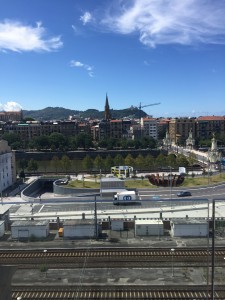
(part of my view on Tabaclera, with the San Sebastian Cathedral tower in the background)
So how does this relate to the cider house? To quickly restate my Tabaclera experience, only by observing the city in its entirety and allowing thoughts to come and go as they pleased have I been able to encounter a deeper and more profound connection with the city, where I feel like I really witnessed the spirit of San Sebastian. Similarly in the cider house the rush of raw emotion overcame me only after I took time to really observe and appreciate my fellow classmates. Seeing their glowing faces, hearing their laughter, reminiscing on our excursions, going to the bars in Parte Viaje, and every other pleasant experience truly established a deeper connection between this group of people and myself. It’s within these faces that I think I discovered the purpose of studying abroad, that the answer manifested itself within the spirit of our group. I saw liberation, carefreeness, relief – an overall joy that suggested something deeper than mere contentment with the way things are. In short, I believe that, even if only for a short period of time, we had truly lost ourselves within the Basque culture. Never before have I felt such a freeing and liberating experience. Living in this foreign land has not only challenged my world views, but its also encouraged me to re-evaluate my own life back home in hopes to further grow from this journey. Thus, I consider the recent rush of passionate emotions I’ve been feeling to be an acknowledgment of our group’s success – these past three weeks we’ve all participated and immersed ourselves into the Basque culture, losing ourselves and becoming unified to a new way of life. To realize this now is incredibly gratifying, but is also accompanied with sorrow as we soon have to separate ourselves from this land. That said, I feel Joseph Campbell perfectly describes the beauty of this experience (thanks to Professor Zabalbeascoa for bringing this quote to my attention).
“It wouldn’t be life if there were not temporality involved which is sorrow. Loss, loss, loss. You’ve got to say yes to life and see it as magnificent this way”
As I bring this post to a close I have one more point I’d like to address – I cannot stress enough how powerful it was for me to share these incredible experiences with a close group of friends and teachers as well. Thus I first want to thank Professor Zabalbeascoa and Professor Conway, for organizing this trip and offering us all invaluable guidance and mentor-ship along the way. Although I like to consider myself a confident and capable person when I need to be, it was certainly comforting being able to look to them for a sense of direction when necessary. I’d also like to thank all the students who joined me on this study abroad experience, for teaching me so much more about myself these past three weeks than I ever could have had I embarked on this journey alone. Although we return to the United States tomorrow, I think we all may be leaving a piece of ourselves behind in San Sebastian.
